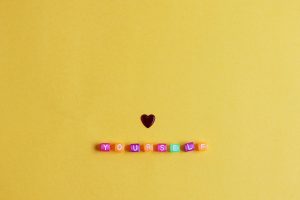Redefining Retail Therapy: Shopping for Joy, Not Just Stuff
In today’s consumer-driven society, retail therapy has become a common term and practice. It is a concept where individuals buy products to improve their mood and overall well-being. However, as the world continues to evolve, so does the definition and understanding of retail therapy. It is no longer just about purchasing items to feel better, but rather a deeper and more meaningful experience that brings joy into our lives. This new way of thinking about retail therapy is known as shopping for joy, not just stuff.
The Changing Landscape of Retail Therapy
Traditionally, retail therapy has been associated with impulsive and often unnecessary purchases to cope with negative feelings or emotions. It has been seen as a temporary fix to boost one’s mood, leading to a vicious cycle of overspending and accumulating clutter. However, as the concept of self-care and well-being gained popularity, the idea of retail therapy has undergone a significant transformation.
The focus is no longer on using shopping as a distraction or numbing agent, but rather a mindful and intentional act of self-care. This shift in perspective has led to a more positive and fulfilling retail therapy experience, where individuals prioritize their happiness and well-being over material possessions.
The Rise of Shopping for Joy
Shopping for joy, also known as conscious consumerism, is centered around the idea of finding joy in the act of shopping itself, rather than solely the products purchased. It emphasizes the importance of being mindful and purposeful in our shopping habits, rather than mindlessly consuming.
Shopping for joy is a holistic approach to retail therapy, where individuals focus on the positive impact of their purchases. This includes considering the source, production process, and environmental impact of a product. It extends beyond just buying things for ourselves and includes the satisfaction of contributing to a greater cause or supporting a small business.
Moreover, shopping for joy is not limited to physical products but can also include experiences and services. This can range from booking a wellness retreat to trying out a new hobby or investing in self-improvement through online courses. The key is to choose experiences or services that bring joy and contribute to one’s personal growth and well-being.
The Benefits of Shopping for Joy
Aside from the obvious advantage of promoting a more sustainable and ethical way of shopping, there are numerous benefits to adopting a shopping for joy mindset. One of the most significant advantages is the long-term impact on our mental and emotional well-being.
Unlike traditional retail therapy, where the temporary high is quickly followed by buyer’s remorse, shopping for joy brings lasting satisfaction and fulfillment. By making mindful and intentional purchases, we can avoid unnecessary clutter and the guilt that comes with overspending. This, in turn, reduces stress and anxiety, promoting a more positive and mindful lifestyle.
Additionally, shopping for joy can also cultivate a sense of gratitude and appreciation for what we have. By only buying what we need and focusing on the positive impact of our purchases, we can shift our perspective and find joy in what may have previously been considered mundane or ordinary.
In Conclusion
Retail therapy has come a long way since its inception. While it used to be associated with impulsive and unnecessary purchases, it has now evolved into a more mindful and fulfilling experience. Shopping for joy, or conscious consumerism, encourages individuals to prioritize their well-being and happiness over material possessions. By being intentional and mindful in our shopping habits, we can experience lasting joy and contribute to a more positive and sustainable world.











